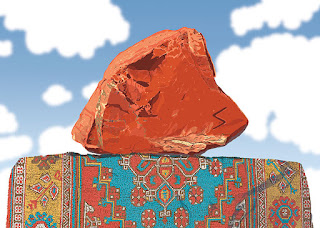Alessia Delvecchio
Willing,
poetic veil, embroidery on organza fabric,
140x140x0,5cm, 2023
IT
Tre sono le forze dell’anima umana: pensare, sentire, volere. Willing rappresenta con la sua forma quadrata le passioni terrene, per la precisione l’alternarsi delle passioni terrene. Dal velo rosso al velo verde, dal ricamo verde che si accende di rosso, e nuovamente al verde, dal culmine al superamento delle passioni terrene. Come le sibille profetizzavano trascrivendo i loro vaticini, così i versi ricamati sul velo richiamano all’atto creativo che libererà l’uomo dai suoi istinti inferiori, liberandolo dal ciclo delle incarnazioni.
Questo lavoro appartiene alla serie intitolata "Way back into Soul", in cui sono rappresentati antichi miti in chiave moderna.
EN
There are three forces of the human soul: thinking, feeling and willing. Willing represents with its square shape the earthly passions, to be precise the alternation of earthly passions. From the red veil to the green veil, from the green embroidery that lights up red, and back to green, from the culmination to the overcoming of earthly passions. Just as the sibyls prophesied by transcribing their prophecies, so the verses embroidered on the veil recall the creative act that will free man from his lower instincts, freeing him from the cycle of incarnations. This work belongs to a series entitled "Way back into Soul", in which ancient myths are represented in a modern way.






